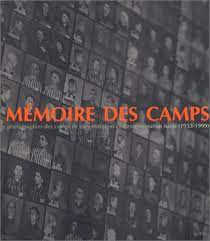The Shoah: fictive images and a mere belief?
Le Monde, slanted newspaper (continued)
The photography exhibition “Mémoire des camps”, currently on view in Paris at the 17th century palace known as the Hôtel de Sully, is stirring up disquiet in some Jewish circles. This exhibition, from which care has been taken to eliminate a few too patent fakes, makes glaring, in our materialist age of the image, of photography and television, the absence of any photograph and of any material element that might prove that the Jews were, during the 1939-1945 war, “victims of an industrially planned extermination”. Those last six words are of Jacques Mandelbaum, a regular journalist at the daily Le Monde. In an article entitled “La Shoah et ces images qui nous manquent” (“The Shoah and those images that we lack”, January 25, 2001, p. 17), he does not hide his puzzlement.
He writes that “no [true] images describing this crime are available”. He speaks, with regard to Auschwitz, of Soviet “propaganda pictures”. He adds:
Some of these [Soviet propaganda] pictures were nonetheless reused afterwards as true archival documents. All the known images concerning this crime are thus, if not false, at least inappropriate. Including, and perhaps especially, those of the mounds of corpses discovered in the concentration camps, the spectacular horror of which is still far from the reality.
He reminds the reader that it is precisely because of the non-existence of real images that it has been “possible to produce images by way of fiction”, and he thinks fiction “is in the process of winning out”. The exhibition’s organisers go so far as to assert, as has Jean-Claude Pressac, that such or such a photograph was taken from inside an Auschwitz gas chamber. Sceptical, the journalist asks: “from a gas chamber or from another building?”
Despite objections voiced on the subject by revisionists, certain authors had dared to claim that, in the photographs taken in 1944 by Allied pilots from high above the Auschwitz complex, the buildings containing the homicidal gas chambers could be made out. J. Mandelbaum notes that, in these photographs, all “things existing at Auschwitz can be deciphered, except the presence of the gas chambers”. He returns to “the insufferable lack of [real] images of the extermination”, and he mentions a dispute amongst exterminationist authors “literally haunted by the near-total absence of photos relating to the extermination”. In passing, he assails “the ineptness of the [exhibition’s] organisers”.
In sum, this Shoah, of which he of course upholds the historical character, is reduced for the moment, on the one hand, to fictive images (he says “images largely inappropriate”) and, on the other, to a belief, itself founded on fictive images.
He concludes:
If seeing is believing, how can it be admitted henceforth that, with regard to the Shoah, the [real] image is precisely what is lacking?
That last question, which is clear, and all of those remarks, which are not lacking in punch, are wrested with much difficulty from the fuzzy mass of the article. The journalist employs manifold contortions of language, writing in a Yeshiva-style French. He seeks systematically to save the holocaustic stake and, indeed, perhaps also to leave an eventual way out for himself and his newspaper. Thus Le Monde, come the day when the myth of the Shoah has to be scuttled, will be able to pride itself on this article of J. Mandelbaum’s and on a few other equally oblique ones.
More than twenty years ago, in the face of the revisionist upsurge, Pierre Vidal-Naquet and his co-religionists began beating a retreat, disowning some of the more blatant lies of their own propaganda. Over the years they have acquired the habit of laying those fallacious inventions at the door of the Communists, the Russians or the Poles. Here it appears that the Le Monde journalist imputes the counterfeit coin of Auschwitz to the Soviets.
January 25, 2001

